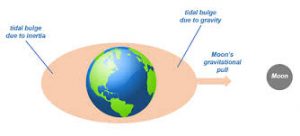Earth’s Rotational Dynamics : Study

Recent research highlights that melting polar ice caps due to climate change are causing the Earth to spin more slowly, leading to minute changes in the duration of a day.
- This phenomenon, while not immediately noticeable in daily lives, could have significant implications for technology reliant on precise timekeeping.
- The melting of polar ice sheets causes water to flow towards the equator, increasing the Earth’s oblateness and moment of inertia.
- Studies show that over the last two decades, the Earth’s rotation has slowed by approximately 1.3 milliseconds per century.
- The principle of angular momentum explains this effect, as polar ice melts and moves towards the equator, the Earth’s moment of inertia (mass distribution near the equator) increases, causing its rotational speed (velocity) to decrease to conserve angular momentum, resulting in a slower spin.
- Projections indicate that if high emission scenarios persist, this rate may increase to 2.6 milliseconds per century, making climate change a dominant factor in the Earth’s rotational slowdown.
- The melting ice also influences the Earth’s axis of rotation, causing a slight but measurable shift. This movement, while small, is another indicator of how climate change impacts fundamental Earth processes.
- The Earth’s rotational axis is tilted relative to its geographic axis.
- This tilt causes a phenomenon known as the Chandler wobble, which can affect rotational timing and stability.




